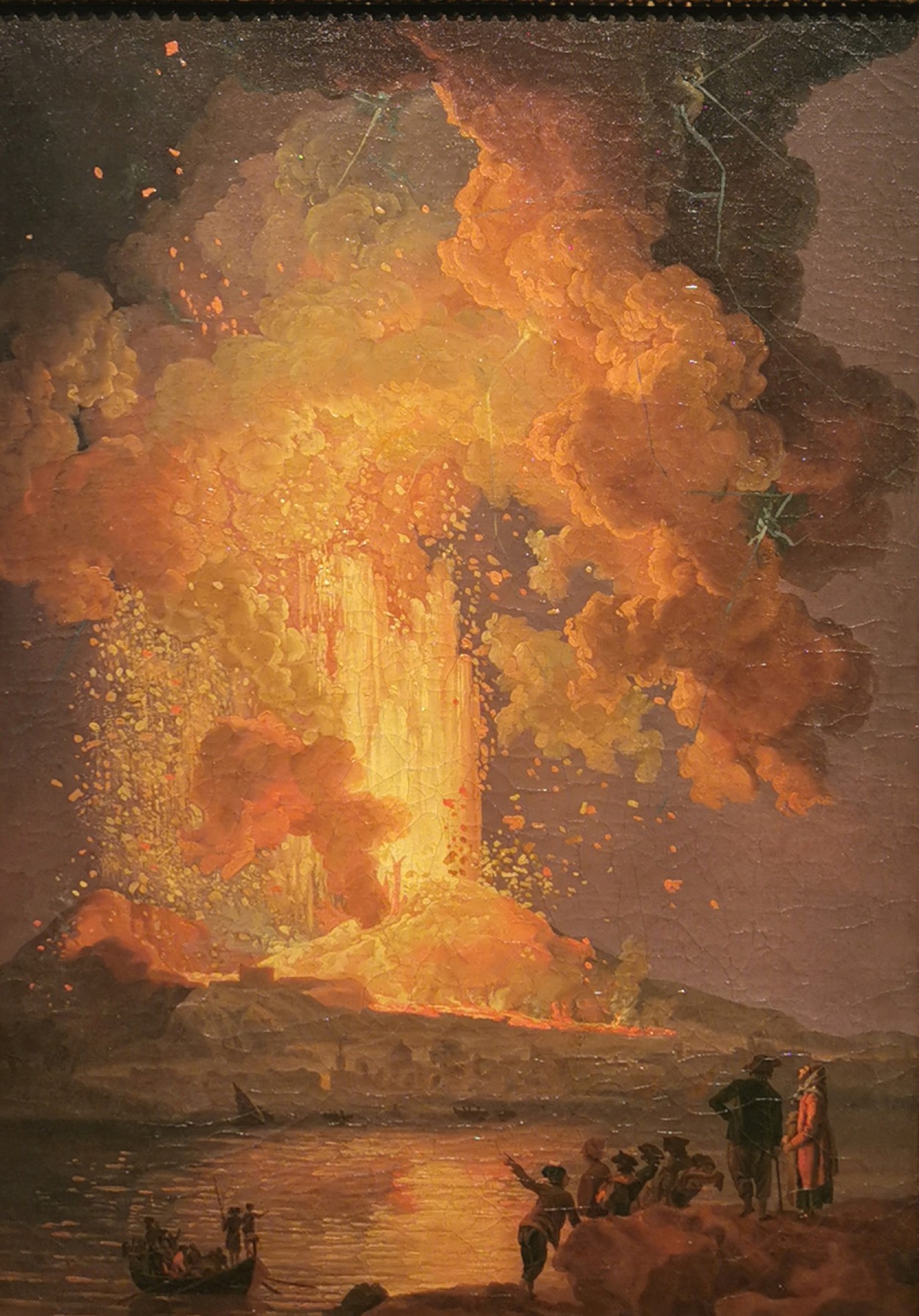
Eruption of Mount Vesuvius in 1779
Pierre Jacques Volaire (1729–1799)
Naples, 1779
Oil on canvas
This painting probably belonged to the Marquis de Clermont d’Amboise (1728–1792), French ambassador to Naples between 1776 and 1782. It is representative of the work of the French painter Pierre Jacques Volaire, who specialised in views of Vesuvius. After working with the landscape painter Joseph Vernet, he moved to Rome in 1762, then Naples in 1767. Shifting away from the seascapes associated with his master, he focused on depictions of Vesuvius, whose eruptions he witnessed in 1767, 1771, 1779 and 1794. The painting represents a spectacular eruption that took place between 8 and 15 August 1779. The explosions lit up the sky as Vesuvius spewed out an impressive volume of volcanic matter, including lava plumes that shot up into the air and flowed down its slopes, and clouds of volcanic ash. These eruptions attracted scientists and curious visitors from all over Europe. The fashion for paintings of Vesuvius was tied to the rise of the veduta, a new genre of landscapes sold as souvenirs to predominantly English and French sightseers on their Grand Tour to Italy.
This work illustrates the evolution of taste in Diderot’s day, notably the period’s predilection, notably among art-loves, for the “sublime spectacle” of awe-inspiring natural landscapes. Diderot discusses this new taste in his writings on poetry and the arts. In the article “Beau” in the Encyclopédie, he distinguishes between the sublime and beauty: “It seems that in our language the idea of beautiful is always associated with that of greatness […]”. Yet “the idea of great , sublime , elevated , has no place on those occasions when one still uses the word beautiful. Just survey in this way all the beings that are called beautiful : one will exclude greatness; […] some even the marked appearance of order and symmetry; such would be the painting of a storm, a tempest, chaos”.